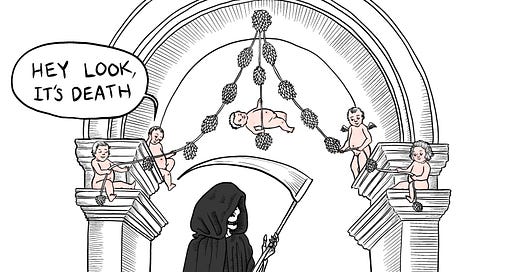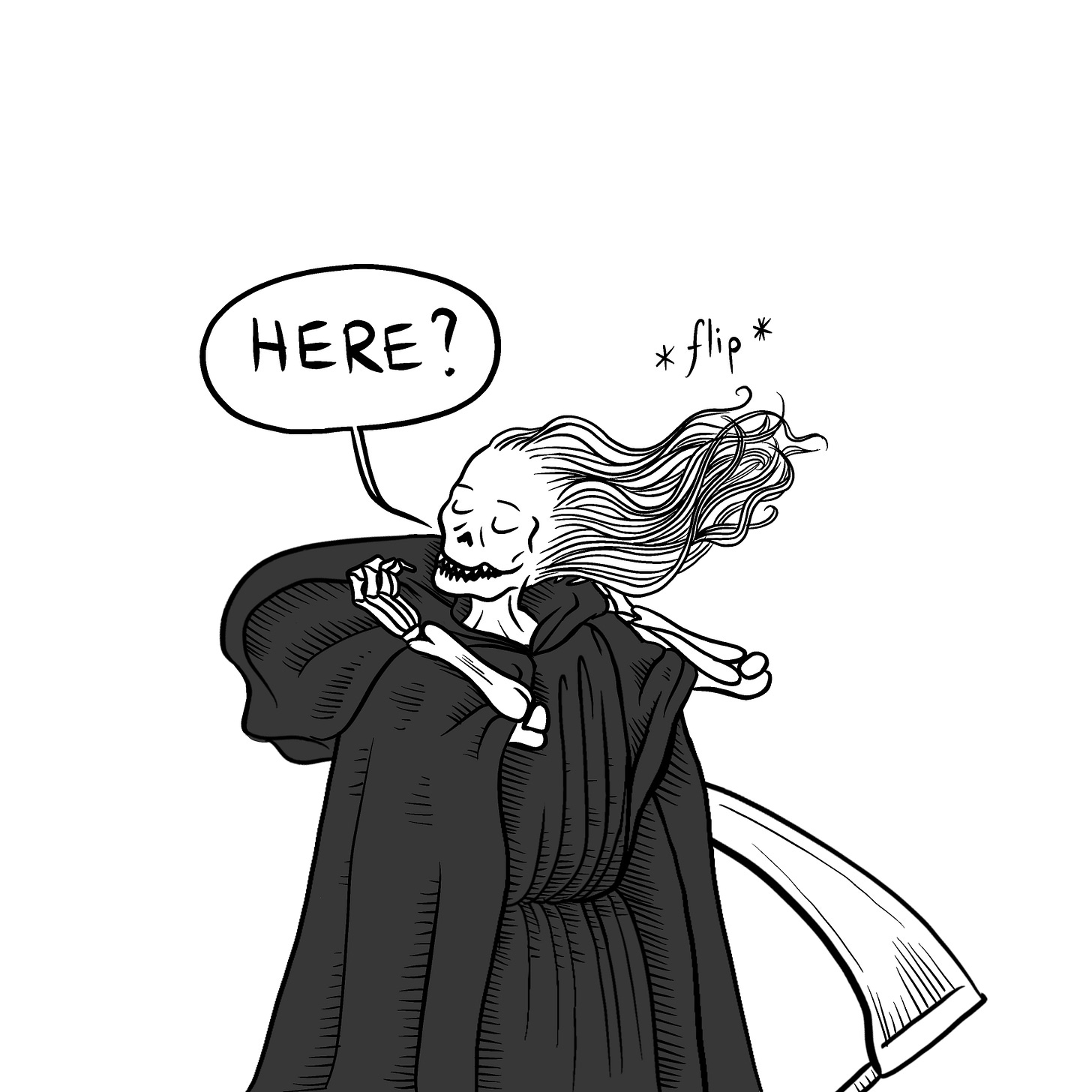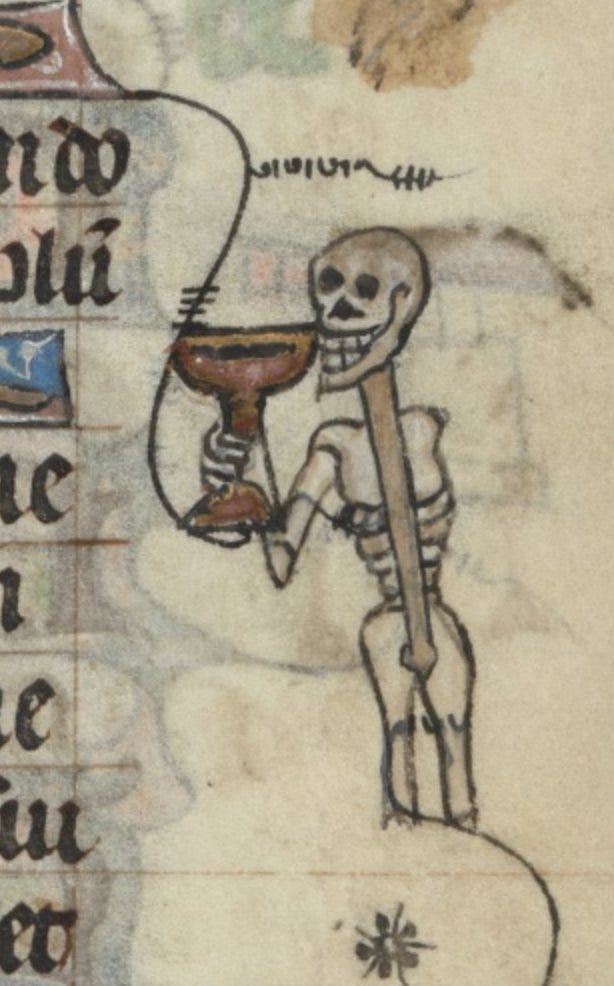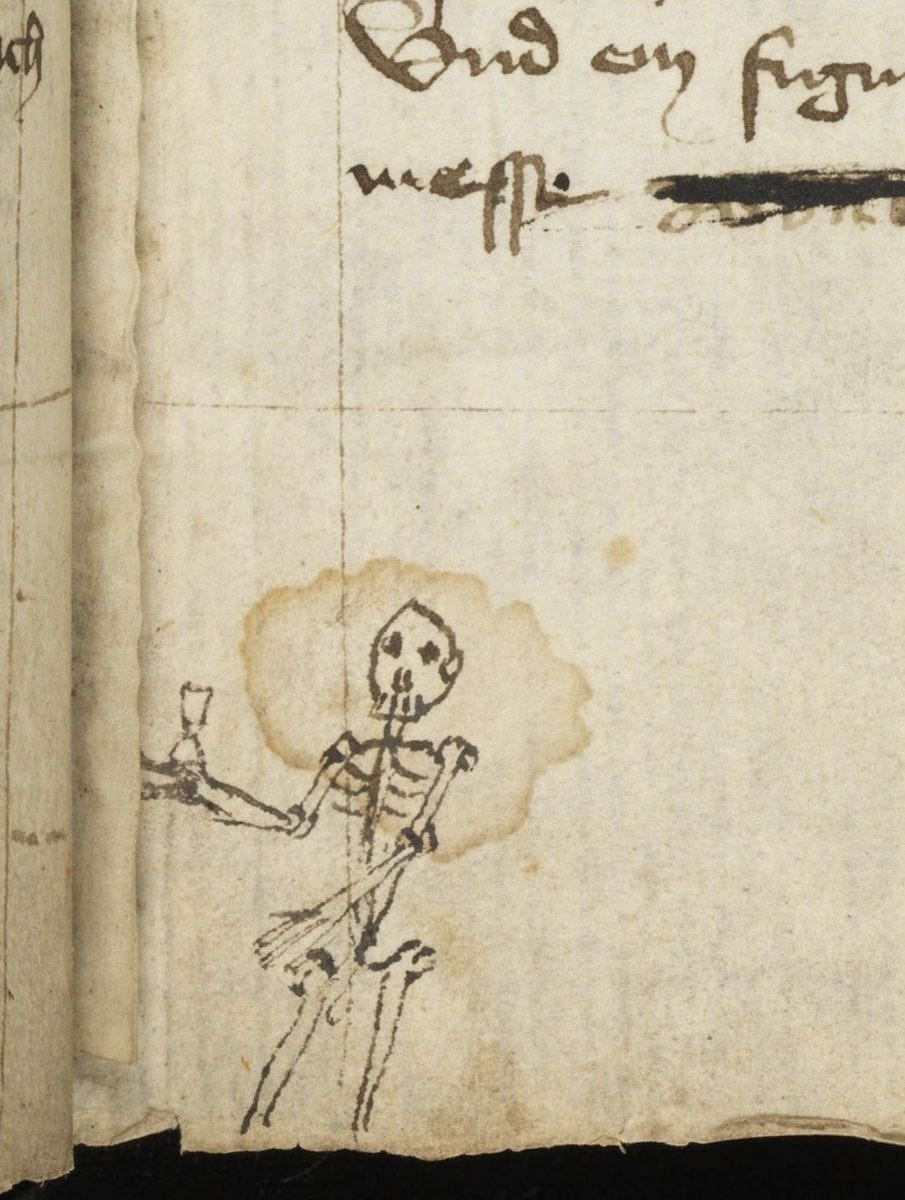I decided to send out today’s newsletter to everyone—paid and free subscribers, because I love today’s content (death! zombies! cemeteries!) and I do want my content to be accessible to everyone as often as possible. Paid subscribers, you make this possible. Thank you, from the bottom of my gooey guts.
So here’s today’s comic, with my commentary below:
This comic was inspired by this image, the Personification of Death at the beginning of the Office of the Dead, from an Italian Book of Hours, c. 1470-1480:
The Book of Hours was one of the most common books during the middle ages—wealthy and even modestly well-to-do folks (mostly women) carried around these little books with them so they could read and contemplate scriptures, prayer, recitations, etc. on the regular. (So pious!)
The Office of the Dead was a subsection in the Book of Hours, and it was a series of prayers and recitations to say for the dead, specifically on All Soul’s Day (November 2). Since these books were usually illustrated—at least in the margins—there were usually images of Death or decomposing corpses inside. Sometimes they were really elaborate, like the one above. Other times they were almost like doodles:
Not all of these skeleton doodles are from versions of the Book of Hours, but they’re still good examples of the kind of death marginalia that spilled out into the margins of books and manuscripts during the middle ages.
Obviously, death itself was a bigger part of life in the middle ages. The word “gothic” was actually invented to describe much of the art and architecture of the time—though it actually means “barbaric,” and has nothing to do with death at all. It’s only in the modern era that the word has been linked to any kind of ghoulish aesthetic.
Folks in the middle ages had to be more comfortable with death because people died earlier and more often. Plus, they didn’t really know about germ theory, so when someone died of an illness and suddenly their family and friends would experience the same symptoms, people actually believed that the dead were popping up from the ground to feast on the bodies of the living.
This gave birth to the idea of the “revenant,” which is basically the medieval version of a vampire or zombie. People were so worried about this happening that they would dig up the bodies of their loved ones to look for evidence that they had come back to life. For hundreds of years, some medieval peasants actually cut up their loved ones before burying them, just in case.
In general, exhuming corpses was way more common back then. When the cemetery ran out of room (which also happened more often then) they’d just dig up the skeletons and make art out of them (ever heard of an ossuary? there are hundreds of them that still exist).
Surprisingly, cemeteries were also pretty lively places back in the middle ages. That’s where all the important events took place: local elections and trials, sermons, and medieval plays all happened on top of the graves of the dead (there weren’t a bunch of headstones back then, either… that really only became common after the Victorian period). Cemeteries were typically owned by the church, so they were often on untaxed land, so businesses vied for good patches of earth to hock their wares. Prostitutes even picked up clientele there.
Being so near to death and decay, it’s likely that most folks had seen more than one decomposing human body at some point in their lives—which is probably why drawings of corpses were so detailed and common in medieval art.
As for showing Death with a full head of hair, that seems to be pretty unique, though many folks believed (and still believe, incorrectly) that hair continues to grow after death. This is actually a trick of the decomposition process. The drying out of the body causes the skin to recede, which sometimes makes the hair and nails look like they’ve been growing. And since hair decomposes slower than other parts of the body (besides bone, obviously), maybe the artist got the idea to show death with hair from their nearest local corpse.
I certainly find them inspiring. That’s why I drew this bonus panel, and it doesn’t really fit in today’s ig post, so I’ll just share it here: (maybe it would look good as a design in the shop? Would anyone be interested in that?)
Thanks for being here. As always, feel free to drop me a line in the comments, and subscribe to the paid newsletter, if you’re interested in this type of content.
Stay fresh, my ghouls,
💀Becca Lee, the Haunted Librarian💀



















That was a really interesting read, thanks!
Yes, I would love a Fresh to Death print! I just discovered your Substack from one of those promo emails Substack puts out. Thanks for bringing all this death stuff to light - truly fascinating!